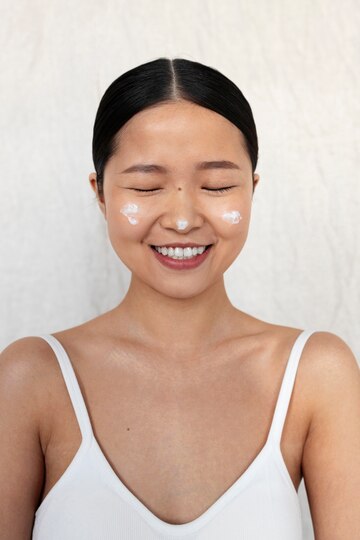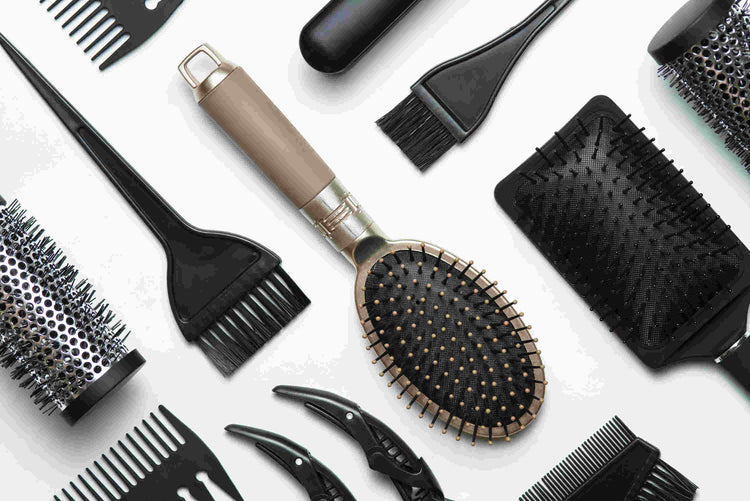How to Get Rid of Textured Skin, According to Experts


Textured skin is a big issue, manifesting as rough, uneven patches that affect the skin's overall complexion. While it's a common concern, understanding its causes and the expert-recommended treatments helps achieve more radiant and smoother skin.
This article will discuss various factors contributing to textured skin and provide valuable insights from skin care professionals and dermatologists on effectively addressing this issue.

Textured skin means an uneven skin surface that feels bumpy or rough. It occurs due to various factors, including:
Some causes are person-specific, e.g., genetics, hormonal changes, improper/ inadequate skincare, diet, stress levels, poor sleep, and exposure to environmental pollutants and toxins. It is essential to Identify these factors for early detection.
The textured skin has some features that distinguish it from the other skin types. A recent review by Professor Amin Mahmood Thawabteh and colleagues (Birzeit University, Palestine) in 2025 has highlighted the following causes of textured skin.
Ageing: Natural ageing processes cause the loss of skin smoothness and firmness, ultimately leading to textures.

Exfoliation removes dead skin cells and reveals smoother skin underneath. There are two main types of exfoliation: physical and chemical. Both use different approaches to remove dead cells.
Physical Exfoliation: This exfoliation uses brushes and scrubs to remove dead skin cells manually. Experts recommend gentle exfoliation using milder to avoid damaging the skin.
Chemical Exfoliation: It uses alpha-hydroxy acids (AHAs) and beta-hydroxy acids (BHAs) to dissolve and remove dead skin cells. Dermatologists often prefer chemical exfoliants as they provide more uniform results and are less abrasive.
Expert Tip: Dr. Amy Wechsler, a New York-based dermatologist and aesthetician suggests the use of a mild chemical exfoliant like glycolic acid 2-3 times a week to enhance skin texture without irritating the skin.
Keeping the skin and body well-hydrated is necessary to maintain a smooth texture. Dehydrated skin can appear flaky and rough, so incorporating hydrating ingredients into the skincare routine is essential. Some powerful hydrating agents for better skin texture are;
Hyaluronic Acid: It is a powerful humectant that attracts and retains moisture, helping to smooth out rough patches and plump the skin.
Ceramides: These lipids help restore the skin's natural barrier and keep it protected and hydrated.
Expert Tip: Dr. Shari Marchbein, a New York-based board-certified dermatologist, recommends using a moisturiser with ceramides and hyaluronic acid to improve skin texture and lock in moisture. He suggested the prolonged use of these ingredients.

Retinoids are vitamin A derivatives, renowned for stimulating collagen production and promoting cell turnover. These ingredients significantly improve skin texture by reducing the appearance of wrinkles, fine lines, and rough patches. Look for retinoids in any product designed for textured skin.
Prescription Retinoids: This category includes tretinoin, adapalene, tazarotene, isotretinoin, alitretinoin, and bexarotene. They are extremely potent and provide faster results. The only possible side effect is irritation.
Over-the-Counter Retinol: These are milder and less irritating and are suitable for sensitive skin. Examples are Neutrogena Rapid Wrinkle Repair Retinol Oil, CeraVe Skin Renewing Retinol Serum, and L'Oréal Paris Revitalift Night Serum with Pure Retinol.
Expert Tip: Dr. Whitney Bowe, an author, and dermatologist, advises starting with low-strength retinol and gradually increasing the concentration to minimise irritation while reaping the benefits.
Sometimes, over-the-counter products are not enough to achieve the desired results. In such cases, professional treatments offer more dramatic improvements in less time. These include;
Chemical Peels: Dermatologists perform these treatments using vital acids to improve texture profoundly by exfoliating the skin.
Microdermabrasion: It is a non-invasive clinical procedure that removes the outer layer of dead skin cells, thus revealing smoother skin.
Microneedling: It involves using tiny needles to create micro-injuries in the skin, and improve skin texture by stimulating collagen production.
Expert Tip: Dr. Ava Shamban, a board-certified Beverly Hills-based dermatologist, recommends professional treatments tailored to individual needs and skin concerns for optimal results.
Sun damage significantly contributes to textured skin. Protecting the skin from UV rays helps prevent further damage and maintains a smoother texture.

Broad-Spectrum Sunscreen: Use a sunscreen with SPF 30 or higher that protects against UVB and UVA rays.
Protective Clothing: Wearing clothes and hats on the skin provides additional protection by avoiding unnecessary exposure to the sunlight.
Expert Tip: Dr. Joshua Zeichner, MD, Director of Clinical and Cosmetic Research in Dermatology at Mount Sinai Hospital, emphasises the importance of daily sun protection as a fundamental step in improving and preventing skin texture.
Maintaining a consistent skincare routine tailored to personal skincare concerns and skin types is vital for sustaining and improving skin texture. This routine must include cleansing, moisturising, exfoliating, and protecting the skin from environmental stressors.
Expert Tip: Dr. Dendy Engelman, a board-certified dermatologist and surgeon, advises sticking to a simple yet effective skincare routine and being patient, as skin texture improvements often take time.
A balanced diet rich in valuable minerals, vitamins, and antioxidants helps support skin health from the inside out. Foods with omega-3 fatty acids and vitamins C and E promote smoother skin.
A recent review by Professor Jacek Januszewski (Medical University of Lublin, Poland) noted the skin health benefits of vitamin C, vitamin E, vitamin A, vitamin D, chlorella, curcumin, Omega-3, gamma oryzanol, biotin, polypodium leucotomos, astaxanthin, Simmondsia chinesis, olive leaf extract, and spirulina.
Drinking plenty of fresh water helps keep the skin hydrated and improves its overall appearance and texture. A 2015 study published in Clinical, Cosmetic, and Investigational Dermatology established that higher water content in the regular diet positively impacts the skin's physiology.
Chronic stress has a negative impact on the skin. Stress-reducing activities such as meditation, yoga, and regular exercise benefit the overall health and well-being of the skin.

Stress impairs wound healing, negatively affects the skin barrier, and causes the release of pro-inflammatory cytokines associated with skin diseases associated with textured skin, e.g., atopic dermatitis, psoriasis, urticaria, and acne.
Adequate sleep is essential for skin repair and regeneration. To support healthy skin, aim for at least 7-9 hours of regular sleep. Chronically poor sleep and low sleep efficiency are direct indicators of poor skin barrier functions.
Some myths circulating in society about textured skin and their reality are;
Fact: Over-exfoliating or using harsh scrubbers has the potential to damage the skin and worsen its texture. Gentle exfoliation of the skin is essential.
Fact: Effective skin care is not necessarily expensive. Many affordable products contain the same active ingredients as high-end brands and are equally or even more effective.
Fact: UV rays can penetrate windows, so wearing sunscreen indoors is still essential, mainly if you sit near windows. Sitting in indoor conditions does not guarantee photoprotection.

It is impossible to achieve completely smooth and flat skin because having so means no pores, which play a vital role in keeping the skin healthy. However, there are many natural ways to minimise these pores, e.g., regular exfoliating.
Many reasons cause the skin to become badly textured. These include dehydration, smoking, diet, sun damage, and genetics—the uneven skin texture results from the buildup of dead cells on the skin's surface.
Peptides and other ingredients, such as niacinamide and retinol, address various skin concerns related to textured skin. Search for these ingredients while looking for products that contain them.
Textured skin has skin tags or the appearance of blemishes, milia, acne, and bumps. It has a dull, rough appearance, thick surface, pigmentation, and discoloration.
A few quick methods that allow the textured skin to heal automatically are regular use of exfoliating agents with glycolic acid, use of salicylic acid if one has acne-prone skin, using lactic acid to soften the skin, using a derma rolling device at home carefully, use an at-home peel for deep exfoliation and add a retinoid into the daily routine.
It takes time, but many ways to improve skin tone at home exist. These are regularly washing the face at least 1-2 times a day, using a gentle facial cleanser according to skin type, avoiding needlessly touching the skin, avoiding popping pimples, using a facial moisturiser and toner, choosing a foundation according to skin type, and regularly cleaning the makeup brushes.
A textured skin with imperfections is normal. As we age, collagen levels decrease, and dry, textured skin becomes a routine. Collagen-stimulating ingredients and sunscreens are effective ways to improve such a skin type.
Achieving smooth, even skin texture requires a combination of the right products, treatments, and lifestyle changes. Following expert advice and being consistent with your skincare routine can improve your skin's texture and enjoy a healthier, more radiant complexion. Remember, patience is crucial, as skin improvements take time.
Consult a dermatologist to tailor a skincare regimen that best suits your needs and concerns.
We have summed up the skin supplements for better skin. Visit us to review them. Our medical & healthcare blog on skincare is a treasure of valuable information and products. Visit it by clicking on the link.








Plus get the inside scoop on our latest content and updates in our monthly newsletter.